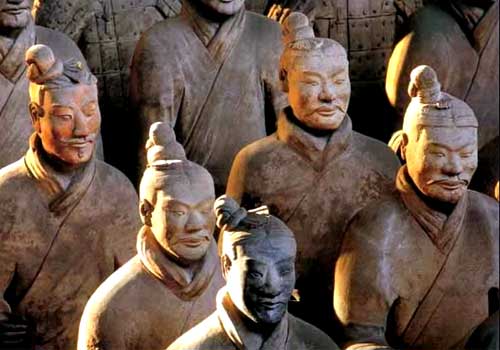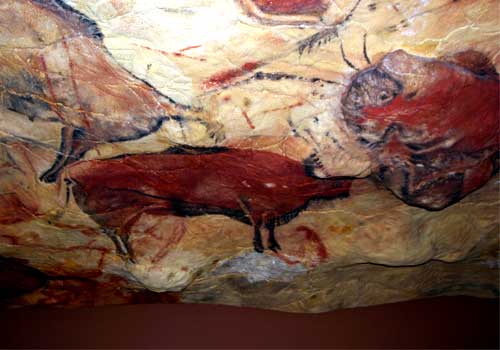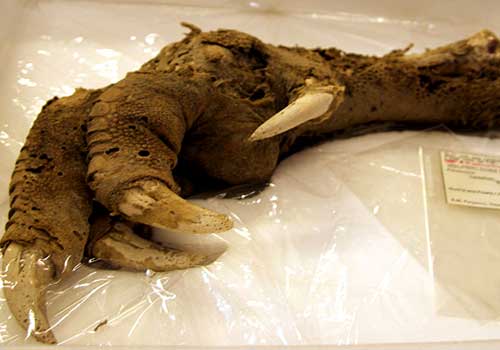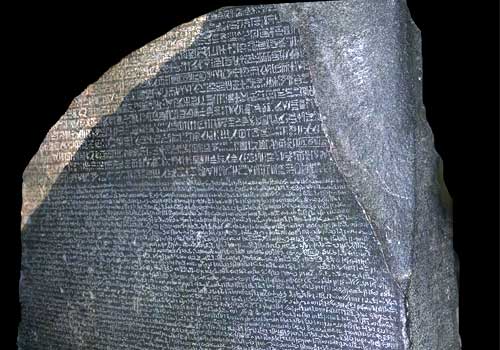Archaeology is one of the most fascinating sciences that we have today.
Many of us has a deep desire to unravel the past such as where we came from or what are the type of society existed before us – the ancients.
The more great archaeologists discover artifacts from the past, the more we learn about our history.
But sometimes those new discoveries rose just as many questions compared to the ones being answered – it’s either they top those past scientific discoveries or because they thought they were myth entirely.
This top 10 list is all about the greatest archaeological find ever made in history.
Terracotta Army

The Terra Cotta Warriors and Horses are the most significant archaeologically excavations of the 20th century.
Work is ongoing at this site, which is around 1.5 kilometres east of Emperor Qin Shi Huang’s Mausoleum in Lintong, Xian, Shaanxi Province. It is a sight not to be missed by any visitor to China.
Upon ascending the throne at the age of 13 (in 246 BC), Qin Shi Huang, later the first Emperor of all China, had begun to work for his mausoleum. It took 11 years to finish.
It is speculated that many buried treasures and sacrificial objects had accompanied the emperor in his afterlife. A group of peasants uncovered some pottery while digging for a well nearby the royal tomb in 1974. It caught the attention of archaeologists immediately.
They came to Xian in droves to study and to extend the digs. They had established beyond doubt that these artefacts were associated with the Qin Dynasty (211-206 BC).
The State Council authorized to build a museum on site in 1975. When completed, people from far and near came to visit. The Museum of Qin Terra Cotta Warriors and Horses have become landmarks on all visitors’ itinerary.
Life size terracotta figures of warriors and horses arranged in battle formations are the star features at the museum. They are replicas of what the imperial guard should look like in those days of pomp and vigor.
The museum covers an area of 16,300 square meters, divided into three sections: No. 1 Pit, No. 2 Pit, and No. 3 Pit respectively. They were tagged in the order of their discoveries.
No. 1 Pit is the largest, first opened to the public on China’s National Day – Oct. 1st, 1979. There are columns of soldiers at the front, followed by war chariots at the back.
(Source)
Cave Of Altamira

Seventeen decorated caves of the Paleolithic age were inscribed as an extension to the Altamira Cave, inscribed in 1985. The property will now appear on the List as Cave of Altamira and Paleolithic Cave Art of Northern Spain.
The property represents the apogee of Paleolithic cave art that developed across Europe, from the Urals to the Iberian Peninusula, from 35,000 to 11,000 BC.
Because of their deep galleries, isolated from external climatic influences, these caves are particularly well preserved.
The caves are inscribed as masterpieces of creative genius and as the humanity’s earliest accomplished art.
They are also inscribed as exceptional testimonies to a cultural tradition and as outstanding illustrations of a significant stage in human history.
(Source)
Mount Owen Moa

In 1986, an expedition descended on Mount Owen in New Zealand with the intention of exploring the vast network of caves that dwell deep beneath the mountain.
Ominous setting, isolated expedition, vast network of unexplored caves. Yep, sounds like somebody’s filming a sequel to The Descent, all right.
And true to horror cliche form, the team was excavating a path between two caves when they found something disturbing. A pile of strange bones.
Still connected to shredded fragments of skin, as though fresh.
Imagine peering through the darkness, with only the tiny, wavering beam of your flashlight picking out the world in front of you, when you’re confronted by that: a very large, very claw-happy foot from some sort of hell-beast that looks like it probably died recently.
And you’re down there, trapped in an underground cave system, not knowing whether its bloodthirsty relatives are nearby.
We mean, best case scenario, it’s going to grant you four ironically cursed wishes that will ultimately kill you, right?
It turns out that the team had stumbled onto the 3,000-year-old remains of an upland moa, a flightless bird that somehow went extinct despite possessing claws that would make a velociraptor jealous.
(Source)
Rosetta Stone

The Rosetta Stone is a granodiorite stele inscribed with a decree issued at Memphis in 196 BC on behalf of King Ptolemy V. The decree appears in three scripts: the upper text is Ancient Egyptian hieroglyphs, the middle portion Demotic script, and the lowest Ancient Greek.
Because it presents essentially the same text in all three scripts (with some minor differences among them), it provided the key to the modern understanding of Egyptian hieroglyphs.
Although it is believed to have originally been displayed within a temple, possibly at nearby Sais, the stone was probably moved during the early Christian or medieval period and was eventually used as building material in the construction of Fort Julien near the town of Rashid (Rosetta) in the Nile Delta.
It was rediscovered there in 1799 by a soldier, Pierre-François Bouchard, of the Napoleonic expedition to Egypt.
As the first Ancient Egyptian bilingual text recovered in modern times, the Rosetta Stone aroused widespread public interest with its potential to decipher this hitherto untranslated ancient language. Lithographic copies and plaster casts began circulating among European museums and scholars.
Meanwhile, British troops defeated the French in Egypt in 1801, and the original stone came into British possession under the Capitulation of Alexandria.
Transported to London, it has been on public display at the British Museum since 1802. It is the most-visited object in the British Museum.
Birthplace of Buddha

The Lord Buddha was born in 623 BC in the sacred area of Lumbini located in the Terai plains of southern Nepal, testified by the inscription on the pillar erected by the Mauryan Emperor Asoka in 249 BC.
Lumbini is one of the holiest places of one of the world’s great religions, and its remains contain important evidence about the nature of Buddhist pilgrimage centres from as early as the 3rd century BC.
The complex of structures within the archaeological conservation area includes the Shakya Tank; the remains within the Maya Devi Temple consisting of brick structures in a cross-wall system dating from the 3rd century BC to the present century and the sandstone Ashoka pillar with its Pali inscription in Brahmi script.
Additionally there are the excavated remains of Buddhist viharas (monasteries) of the 3rd century BC to the 5th century AD and the remains of Buddhist stupas (memorial shrines) from the 3rd century BC to the 15th century AD.
The site is now being developed as a Buddhist pilgrimage centre, where the archaeological remains associated with the birth of the Lord Buddha form a central feature.
(Source)
Pompeii

Mount Vesuvius, a volcano near the Bay of Naples in Italy, is hundreds of thousands of years old and has erupted more than 50 times.
Its most famous eruption took place in the year 79 A.D., when the volcano buried the ancient Roman city of Pompeii under a thick carpet of volcanic ash.
The dust “poured across the land” like a flood, one witness wrote, and shrouded the city in “a darkness…like the black of closed and unlighted rooms.”
Two thousand people died, and the city was abandoned for almost as many years. When a group of explorers rediscovered the site in 1748, they were surprised to find that–underneath a thick layer of dust and debris–Pompeii was mostly intact.
The buildings, artifacts and skeletons left behind in the buried city have taught us a great deal about everyday life in the ancient world.
Ever since the ancient Greeks settled in the area in the 8th century B.C., the region around Mount Vesuvius and the Bay of Naples attracted wealthy vacationers who wanted to soak up the sun and the scenery.
By the turn of the first century A.D., the town of Pompeii, located about five miles from the mountain, was a flourishing resort for Rome’s most distinguished citizens.
Elegant houses and elaborate villas lined the paved streets.
Tourists, townspeople and slaves bustled in and out of small factories and artisans’ shops, taverns and cafes, and brothels and bathhouses. People gathered in the 20,000-seat arena and lounged in the open-air squares and marketplaces.
On the eve of that fateful eruption in 79 A.D., scholars estimate that there were about 20,000 people living in Pompeii and the surrounding region.
(Source)
Dead Sea Scrolls

The Dead Sea Scrolls refer to ancient Hebrew scrolls that were accidentally discovered in 1947 by a Bedouin boy in Israel’s Judean Desert.
On display today in the Shrine of the Book at the Israel Museum in Jerusalem, the scrolls have kindled popular enthusiasm as well as serious scholarly interest over the past half century as they reveal exciting history from the Second Temple period (520 B.C.E.-70 C.E.) – a time of crucial developments in the crystallization of the monotheistic religions.
(Source)
Gates Of Hell

Archaeologists digging in Turkey have found the guardians of the “Gate to Hell” — two unique marble statues which once warned of a deadly cave in the ancient Phrygian city of Hierapolis, near Pamukkale.
Known as Pluto’s Gate — Ploutonion in Greek, Plutonium in Latin — the cave was celebrated as the portal to the underworld in Greco-Roman mythology and tradition.
It was discovered in March by a team led by Francesco D’Andria, professor of classic archaeology at the University of Salento.
“The statues represent two mythological creatures,” D’Andria told Discovery News. “One depicts a snake, a clear symbol of the underworld, the other shows Kerberos, or Cerberus, the three-headed watchdog of hell in the Greek mythology.”
(Source)
Tomb Of The God King

Mount Nemrut (Nemrut Dagi in Turkish) is a monumental site belonging to the Kingdom of Commagene, a small, independent Armenian kingdom that was formed in 162 B.C.
This was a period during which the once mighty Seleucid Empire was beginning to disintegrate, allowing certain areas of its empire to break free from the centralised control of the Seleucids.
Located in the eastern Taurus mountain range in southern Turkey, near the town of Adiyaman, Mount Nemrut is home to an ancient complex built by the fourth, and arguably the most famous, king of Commagene, Antiochus I Theos (the ‘God King’).
King Antiochus I, ruler of Commagene from 70 BC to 36BC, was a most unusual king. He claimed descent from Greek conqueror Alexander the Great on his mother’s side, and from the Persian King Darius the Great on his father’s side, thus combining the west and the east.
But what was particularly salient about this king was his unerring pride and his over-extended ego.
Antiochus I claimed he had a special relationship with the gods and instituted a royal cult in the Greek form of the religion Zoroastrianism with the clear intention of being worshipped as a god after his death.
King Antiochus I practised astrology of a very esoteric kind, and laid the basis for a calendrical reform, by linking the Commagene year, which till then had been based on the movements of the Sun and Moon, to the Sothic-Anahit (Star of Sirius) and Hayk (Star of Orion) cycle used by the Egyptians as the basis of their calendar.
This would suggest that Antiochus was knowledgeable about, if not fully initiated into Hermeticism.
Antiochus commissioned the construction of a magnificent religious sanctuary on Mount Nemrut (Nemrud Dagi), a 2,100 metre high mountain where people could come and pray to him.
Antiochus wanted his sanctuary to be in a high and holy place, close to the gods in order to be in rank with them, and high enough that the whole kingdom could see it and remember him.
The tomb-sanctuary was built in 62 BC and consists of a pyramid-shaped mound of stone chips with a diameter of 145 m and was 50 m in height. Two antique processional routes radiate out from the east and west terraces. The scale of this structure and the amount of labour that was required to build it are impressive on their own.
Nevertheless, it is the cultural assimilation reflected in this monument that sets it apart from most other superstructures.
Until recently, little had been recovered or excavated from the great mound atop Mount Nemrut. The artificially constructed mound has sat undisturbed for centuries and archaeologists have long wondered what lay beneath it.
Then, late last year, a group of archaeologists used ground-penetrating radar to examine the site.
They discovered a pyramidal-shaped chamber with a box-like object (about 6 foot long) in the centre. There appear to be other objects, possibly statues within the chamber. Could this be the sarcophagus and final resting place of Antiochus the god king? It seems highly likely. Archaeologists are now waiting in anticipation for permission from Turkish authorities to excavate the site.
(Source)
Lycurgus Cup

The colorful secret of a 1,600-year-old Roman chalice at the British Museum is the key to a supersensitive new technology that might help diagnose human disease or pinpoint biohazards at security checkpoints.
The glass chalice, known as the Lycurgus Cup because it bears a scene involving King Lycurgus of Thrace, appears jade green when lit from the front but blood-red when lit from behind—a property that puzzled scientists for decades after the museum acquired the cup in the 1950s.
The mystery wasn’t solved until 1990, when researchers in England scrutinized broken fragments under a microscope and discovered that the Roman artisans were nanotechnology pioneers: They’d impregnated the glass with particles of silver and gold, ground down until they were as small as 50 nanometers in diameter, less than one-thousandth the size of a grain of table salt.
The exact mixture of the precious metals suggests the Romans knew what they were doing—“an amazing feat,” says one of the researchers, archaeologist Ian Freestone of University College London.
The ancient nanotech works something like this: When hit with light, electrons belonging to the metal flecks vibrate in ways that alter the color depending on the observer’s position.
Gang Logan Liu, an engineer at the University of Illinois at Urbana-Champaign, who has long focused on using nanotechnology to diagnose disease, and his colleagues realized that this effect offered untapped potential.
“The Romans knew how to make and use nanoparticles for beautiful art,” Liu says. “We wanted to see if this could have scientific applications.”
When various fluids filled the cup, Liu suspected, they would change how the vibrating electrons in the glass interacted, and thus the color.
(Today’s home pregnancy tests exploit a separate nano-based phenomenon to turn a white line pink.)
(Source)
